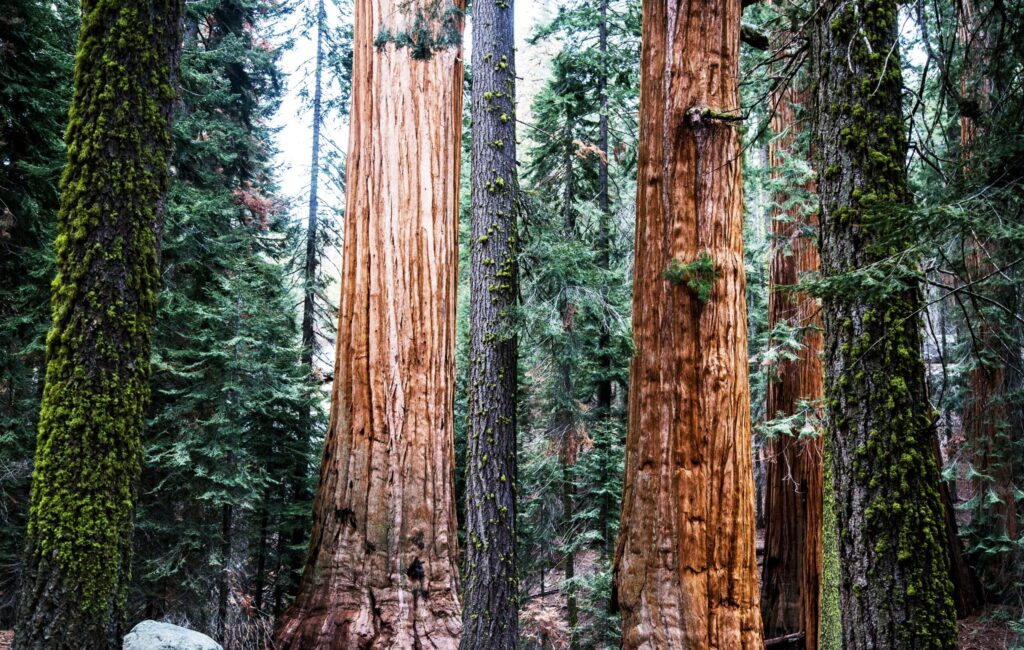United States Unveiled: Exploring the Majesty of America’s National Parks
Explore the enchanting natural wonders of the United States through its diverse array of national parks. While the rugged landscapes of the West often steal the spotlight, there are several to explore on the East Coast, which boasts a collection of remarkable natural treasures waiting to be discovered.
Whether you’re traversing Utah’s Bryce Canyon, visiting iconic Skyline Drive in Shenandoah National Park, or delving into the mangrove forests of Biscayne, each park promises an immersive journey of biodiversity and into the beauty of America.
Here’s a list of some of the most well-known national parks:

Yellowstone National Park (Wyoming, Montana, Idaho):
-
- The first national park in the world, Yellowstone is famous for its geothermal features, including geysers, hot springs, and mud pots. It also boasts diverse wildlife, such as grizzly bears, wolves, bison, and elk.
Grand Canyon National Park (Arizona):
-
- Carved by the Colorado River, the Grand Canyon is one of Earth’s most impressive natural wonders. Its vast scale, intricate rock formations, and colorful landscape draw millions of visitors annually.
Great Smoky Mountains National Park (Tennessee, North Carolina):
-
- The Smokies, known for its lush forests, diverse plant and animal life, and mist-covered mountains. It is also one of the most biodiverse areas in the world.
Zion National Park (Utah):
-
- It is famous for its towering sandstone cliffs, narrow slot canyons, and the scenic Zion Canyon. It offers exceptional hiking opportunities with trails ranging from easy walks to strenuous hikes.

Yosemite National Park (California):
-
- It is renowned for its granite cliffs, waterfalls, giant sequoia groves, and diverse ecosystems. Yosemite Valley is one of the most iconic natural features in the United States.
Rocky Mountain National Park (Colorado):
-
- Home to majestic mountain landscapes, alpine lakes, and a variety of wildlife, including elk, bighorn sheep, and moose. Trail Ridge Road offers breathtaking views of the park’s high peaks.
Grand Teton National Park (Wyoming):
-
- It is known for its dramatic mountain scenery, including the iconic Teton Range, pristine lakes, and abundant wildlife. It offers opportunities for hiking, climbing, boating, and wildlife viewing.
Everglades National Park (Florida):
-
- The largest tropical wilderness of any kind in the U.S., the Everglades is a unique ecosystem of sawgrass marshes, mangrove forests, and diverse wildlife, including alligators, manatees, and endangered species like the Florida panther.

Arches National Park (Utah):
-
- It is renowned for its stunning rock arches, spires, and fins carved by erosion over millions of years. Delicate Arch is one of the park’s most iconic and photographed features.
Acadia National Park (Maine):
-
- Rocky coastlines, lush forests, and granite peaks characterize it. Cadillac Mountain, the highest point along the North Atlantic seaboard, offers stunning sunrise views.
Glacier National Park (Montana):
-
- Named for its glaciers, rapidly disappearing due to climate change, this park features rugged mountains, pristine lakes, and abundant wildlife. The Going-to-the-Sun Road offers breathtaking views of the landscape.
Mount Rainier National Park (Washington):
-
- The towering presence of Mount Rainier, an active stratovolcano and the highest peak in the Cascade Range, dominates it. The park offers glaciers, subalpine meadows, and old-growth forests, as well as hiking and climbing opportunities.

Bryce Canyon National Park (Utah):
-
- It is known for its unique geological formations called hoodoos, spire-shaped rock formations formed by erosion. The park’s high elevation also offers excellent stargazing opportunities.
Great Sand Dunes National Park and Preserve (Colorado):
-
- Features the tallest sand dunes in North America, set against the backdrop of the Sangre de Cristo Mountains. Visitors can hike the dunes, sled, or sandboard down them, and explore the diverse ecosystems of the surrounding area.
Shenandoah National Park (Virginia):
-
- Nestled in the Blue Ridge Mountains of Virginia, Shenandoah National Park offers stunning vistas, cascading waterfalls, and diverse wildlife. The park is renowned for its scenic Skyline Drive, which winds along the crest of the mountains for 105 miles, providing panoramic views of the surrounding landscape.
Congaree National Park (South Carolina):
-
- Home to one of the largest intact expanses of old-growth bottomland hardwood forests in the southeastern United States, Congaree National Park is a haven for biodiversity. Visitors can explore the park’s lush floodplain forests via boardwalk trails, canoeing, and kayaking.

Biscayne National Park (Florida):
-
- Located just south of Miami, Biscayne National Park protects a diverse marine ecosystem encompassing coral reefs, mangrove forests, and shallow bay waters. Visitors can snorkel, dive, boat, and kayak to explore the park’s underwater wonders and island habitats.
Did you know?
The National Parks Passport, a popular program among park enthusiasts, allows visitors to collect cancellation stamps at participating national parks and sites across the United States. These stamps serve as unique souvenirs of each park visit and can be added to physical passport books or digital versions.
You may need to know that special edition passport books are available featuring themes like junior ranger programs, specific regions, or anniversaries, adding an extra element of fun and collectibility to the passport experience.

A little history:
The history of national parks in the United States traces back to the mid-19th century when concerns over preserving the country’s natural wonders began to emerge. Influential figures like artist George Catlin and writer Henry David Thoreau advocated for protecting wilderness areas. In 1872, President Ulysses S. Grant signed the bill establishing Yellowstone National Park as the world’s first national park, setting a precedent for conservation efforts globally.
The creation of Yellowstone sparked a movement to preserve other significant landscapes, leading to the establishment of iconic parks like Yosemite, Sequoia, and Mount Rainier in the late 19th and early 20th centuries. The National Park Service (NPS) was officially established in 1916 to oversee and manage these protected areas, with a mission to conserve the scenery, wildlife, and cultural heritage for future generations while providing opportunities for public enjoyment and education.
Since then, the national park system has expanded to include over 400 areas, ranging from vast wilderness preserves to historic sites, monuments, and recreation areas, showcasing the diverse natural and cultural heritage of the United States.



